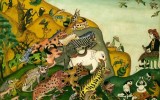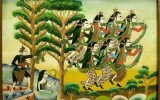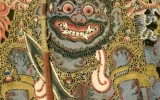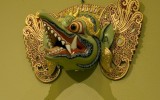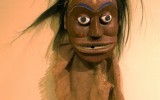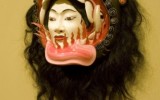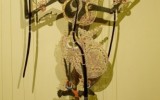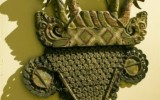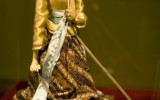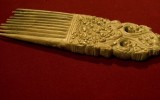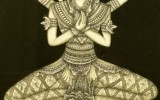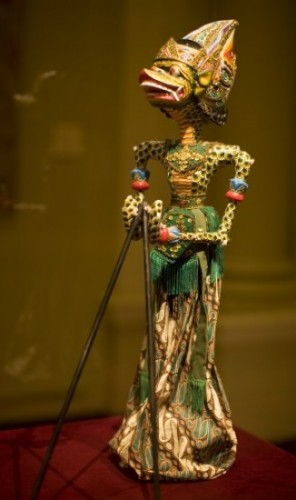November 19 – February 7, 2010
Works from the Clare and Joseph Fischer Collection
The Republic of Indonesia consists of some 13,000 inhabited islands, most of which are home to some 120 ethnic groups having their distinct languages and traditional arts, music and dance. Many of these are connected to religion, to spiritual beliefs and sacred rituals. The two most well known and densely populated islands are Java and Bali. Most Javanese are Muslims and most Balinese are Hindus. They, however, share traditions in art, celebration and performance that originated in India, mixed with indigenous customs. The most popular of these are the two great Indian epics: the Mahabharata and the Ramayana. These narratives of some 100,000 verses are the major influences on dance, puppet plays, paintings, sculpture and woven textiles in both Java and Bali. Many of the traditional objects and activities that these two cultures produced are part of a remarkable creative, spiritual and cosmic order. In this cultural universe everything significant is related and is all inclusive. The objects in the exhibition reflected this connection the Javanese and Balinese believers and practitioners. What they paint, carve, weave and perform serve to promote cultural continuity, provide economic benefits, foster harmony in a fierce world and perhaps affect a safe voyage to the next life.
The majority of objects exhibited came from Bali, an island culture of extraordinary and diverse arts, crafts, music and dances that are almost unique in the world. In Java traditional art, with the exception of architecture, have been little influenced by Islam, which accounts for their sparseness in this exhibition.
Programs + Events
